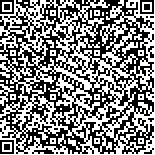| 摘要: |
| [摘要] 目的 观察中草药联合常用利尿西药治疗肝硬化腹水的临床疗效,并初步比较中草药与西药常用利尿剂在治疗肝硬化腹水过程中对电解质平衡的影响。方法 将经过临床及影像学检查确诊为肝硬化腹水的200例患者,随机分为治疗组和对照组(各100例),治疗组在服用常规利尿西药(螺内酯及呋噻米等)的基础上,根据中医理论的整体观念,辨证施治,分别采用“疏肝、健脾、温肾、宣肺”等法,一人一方,每日加用一剂中药汤剂口服或保留灌肠。对照组单用利尿药(用法同治疗组)。两组患者其它治疗相同。疗效观察时限设定为2周,主要观察患者临床症状、体征及B超、血钾浓度等变化。结果 治疗组和对照组总有效率分别为85.0%、72.0%,两组差异有统计学显著意义(χ2=5.01,P<0.05);显效率分别为45.0%、25.0%,两组差异有统计学极显著意义(χ2=8.33,P<0.01)。疗程中原血清钾离子浓度正常变为低钾血症及原低钾血症进一步加重者治疗组和对照组分别为20例、35例,两组差异有统计学显著意义(χ2=4.59,P<0.05)。结论 中西医结合治疗肝硬化腹水较之单用西药利尿剂显效率明显提高,在总有效率及显效率方面均有显著性差异;在维持电解质(血钾)平衡方面明显占优。中草药在利尿和维持电解质平衡方面的作用机理及其远期疗效有待进一步深入观察和研究。 |
| 关键词: 肝硬化 腹水 中西医结合疗法 |
| DOI:10.3969/j.issn.1674-3806.2009.11.13 |
| 分类号:R 512.6 |
| 基金项目: |
|
| Clinical observation on integrated traditional chinese and western medicine in the treatment of 100 patients with ascites due to cirrhosis |
|
CHEN Sheng-peng, ZHU Ji-min, HUO Jiang-tao
|
|
Department of Infectious Disease, 260 Hospital of PLA, Shijiazhuang Hebei 050041, China
|
| Abstract: |
| [Abstract] Objective To observe the clinical efficacy of ascites due to cirrhosis treated with chinese medical herb combined with the common western medicine diuretics, and compare the influence of chinese medical herb diuretics and western medicine diuretics on electrolyte balance in the treatment process of ascites due to cirrhosis.Methods Two hundred patients with ascites due to cirrhosis were divided into the treatment group and control group randomly. According to the whole concept of chinese medicine theory, the patients of treatment group were diagnosed and treated basing on an overall analysis of the illness and the patients condition.The treatment group adopted the methods of soothing the liver, invigorating the spleen, warming the kidney, spreading lung on the basis of taking the common western medicine diuretics (spironolactone tablets and furosemide tablets, etc).Each patient had their own prescription, added one dose of chinese medical decoction or reserving clysis every day. the patients of control group adopted diuretics alone(with the same method as the treatment group). The two grups had the same other treatment. The efficacy observation time was two weeks.The main observation indexes included the changes of clinical symptom, physical sign, type-B ultrasonic examination and blood potassium comentration.Results The total effective rate of the treatment group and control group were 85.0% and 72.0% respectively;the two groups had significant difference (χ2=5.01,P<0.05));the significant rate were respectively 45.0%、25.0%,the two groups had significant difference(χ2=8.33,P<0.01).In the course of treatment, the number of patients whose original normal blood serum potassium concentration changing to hypokalemia or whose original hypokalemia becoming more serious in the treatment group and the control group were 20, 35 resptclively, the two groups had significant difference (χ2=4.59,P<0.05)).Conclusion Compared with western medicine diuretic, integrated traditional chinese and western medicine in the treatment of ascites due to cirrhosis has high clinical efficacy, the two method has significant difference in the total effective rate and significant rate;integrated traditional chinese and western medicine curing ascites due to cirrhosis has priority in maintaining electrolyte (blood potassium) balance. The mechanism of action and long-term clinical efficacy of traditional chinese herb in diureses and maintaining electrolyte (blood potassium)balance should be further observed and researched. |
| Key words: Cirrhosis Astites Integrated traditional chinese and western medicine treatment |

